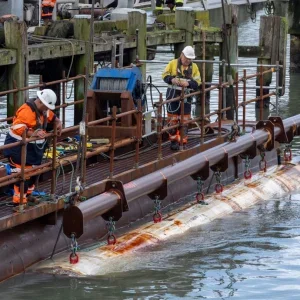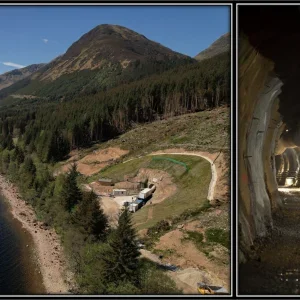River conveyance of construction materials and spoil has resulted in the elimination of 600,000 heavy goods vehicle (HGV) journeys, saving nearly 15,000t of carbon dioxide emissions. Around 98% of spoil from the main tunnel has been transported from the river banks since tunnelling started.
According to Tideway, a large 1,600t barge can carry as much material as nearly 100 HGVs and produces up to 90% fewer CO2 emissions. This has reduced the project’s carbon footprint, resulting in cleaner air for pedestrians, cyclists and other road users who can therefore enjoy safer roads.
Tideway’s achievement is backed up by independent research from 2019 which concluded that when compared to HGV equivalents, using barges for material conveyance can bring significant reductions in emissions:
- 90% less CO2 (carbon dioxide)
- 95% less CO (carbon monoxide)
- 86% less NO (nitric oxide)
- 54% less NOx (nitrogen oxides).
In addition, the entire fleet for the central section of the project is now powered by biodiesel – an ultra-low emission, sustainable fuel generated from waste vegetable oil.
Running mostly under the river at depths of 30-70m, the Tideway tunnel is designed to transfer sewage eastwards under gravity, intercepting the roughly 39 million tonnes of raw sewage overflows estimated to enter the Thames every year. Expected to cost around US$5.5bn, the project should be completed sometime in 2025.







